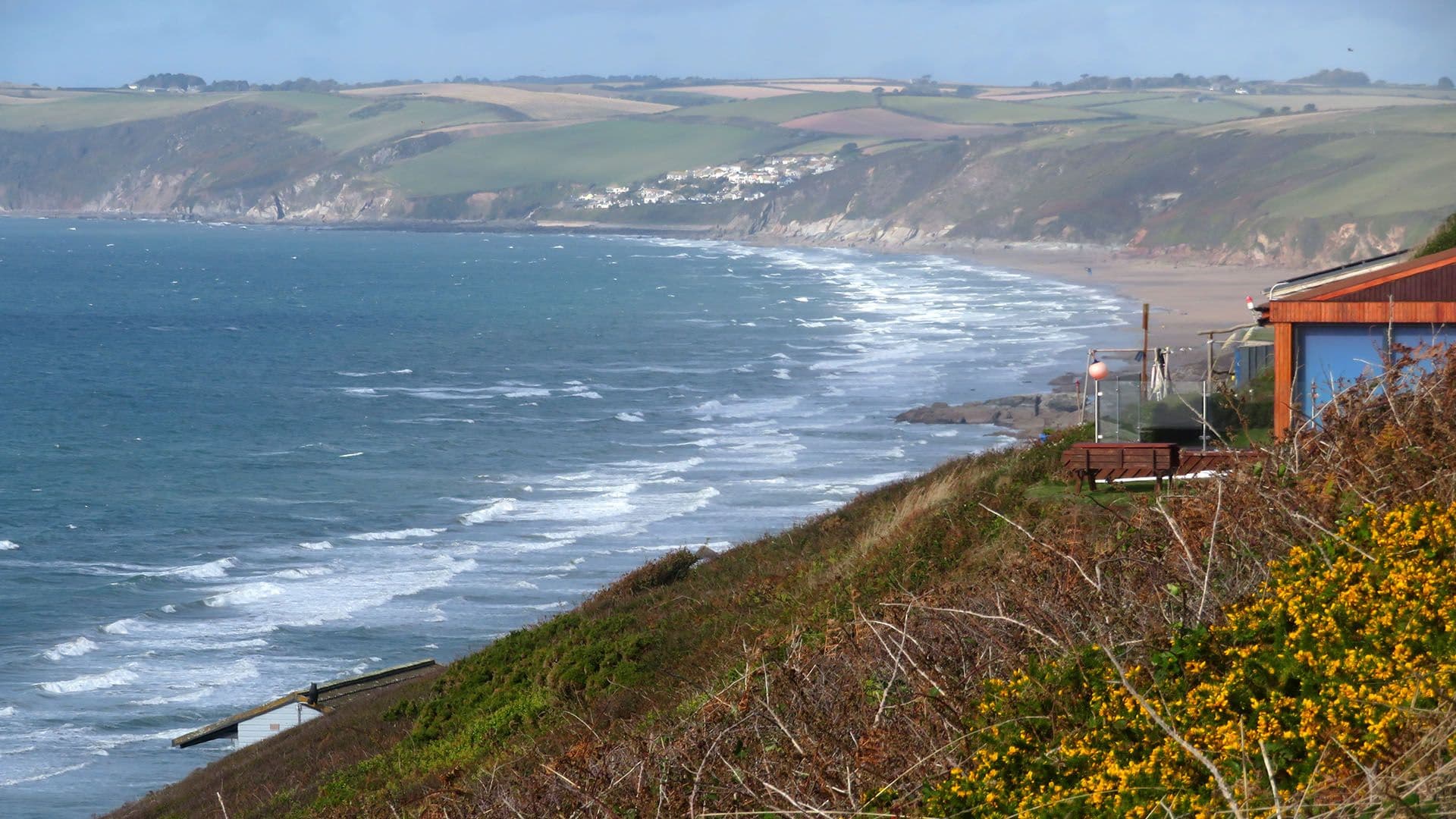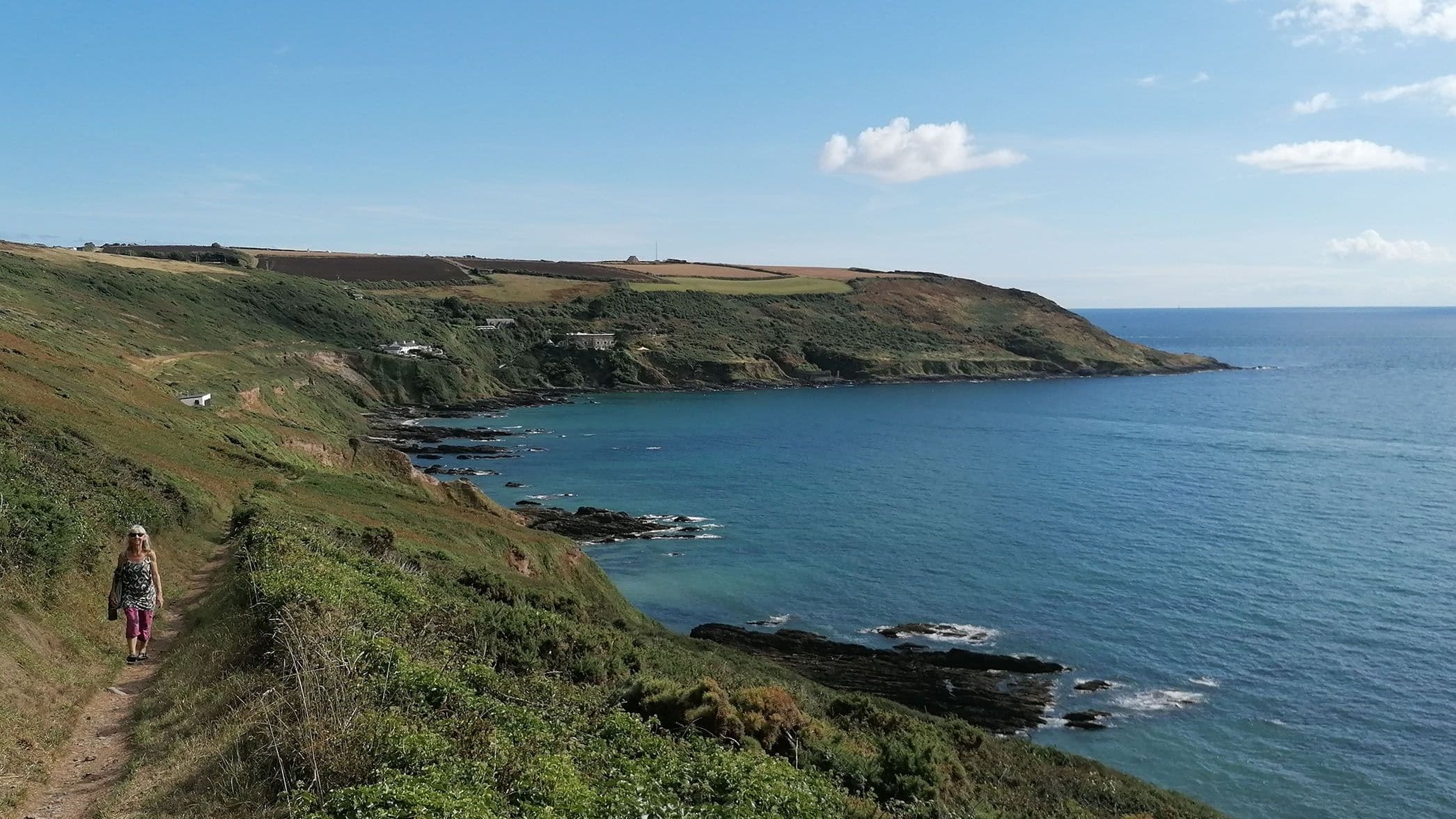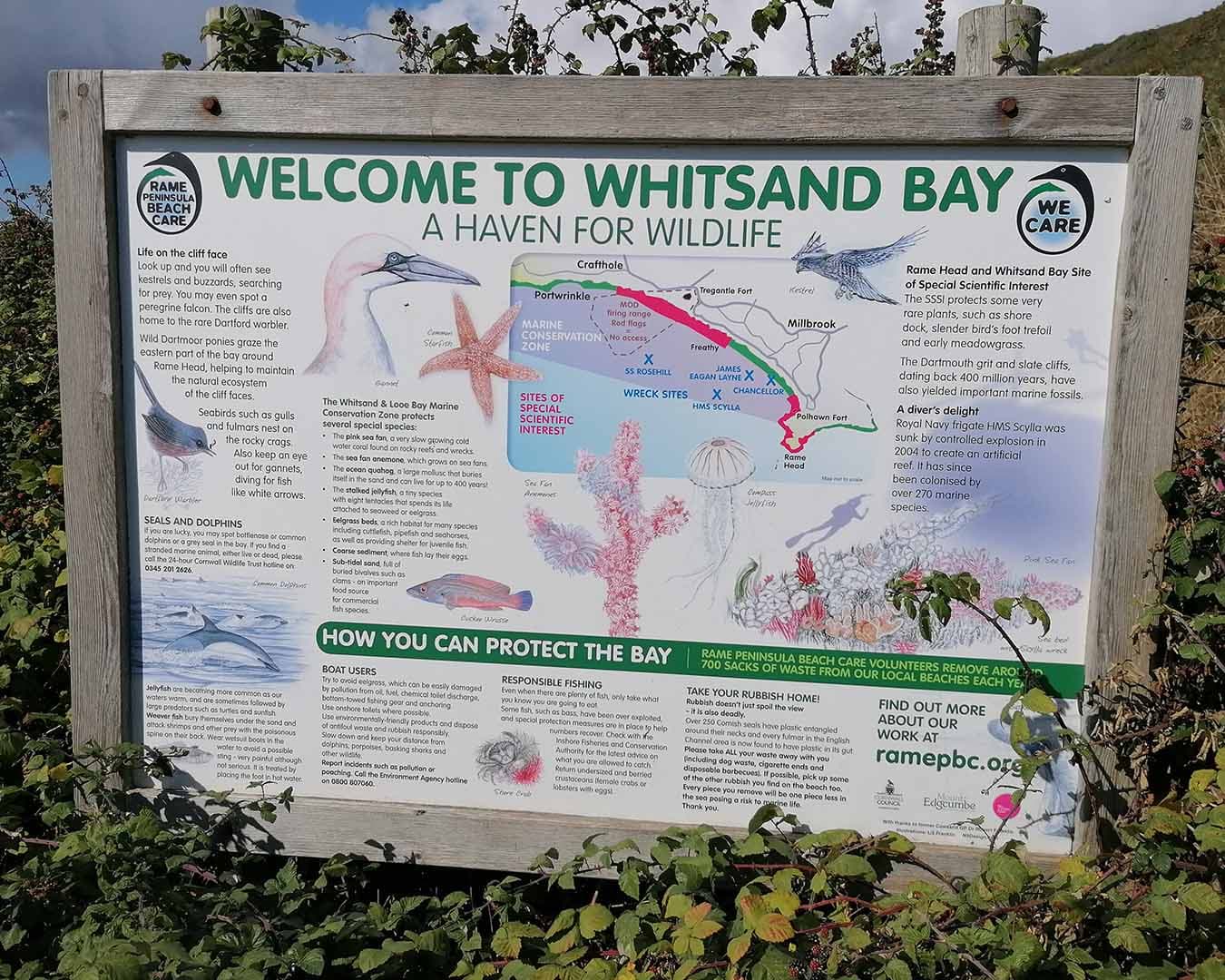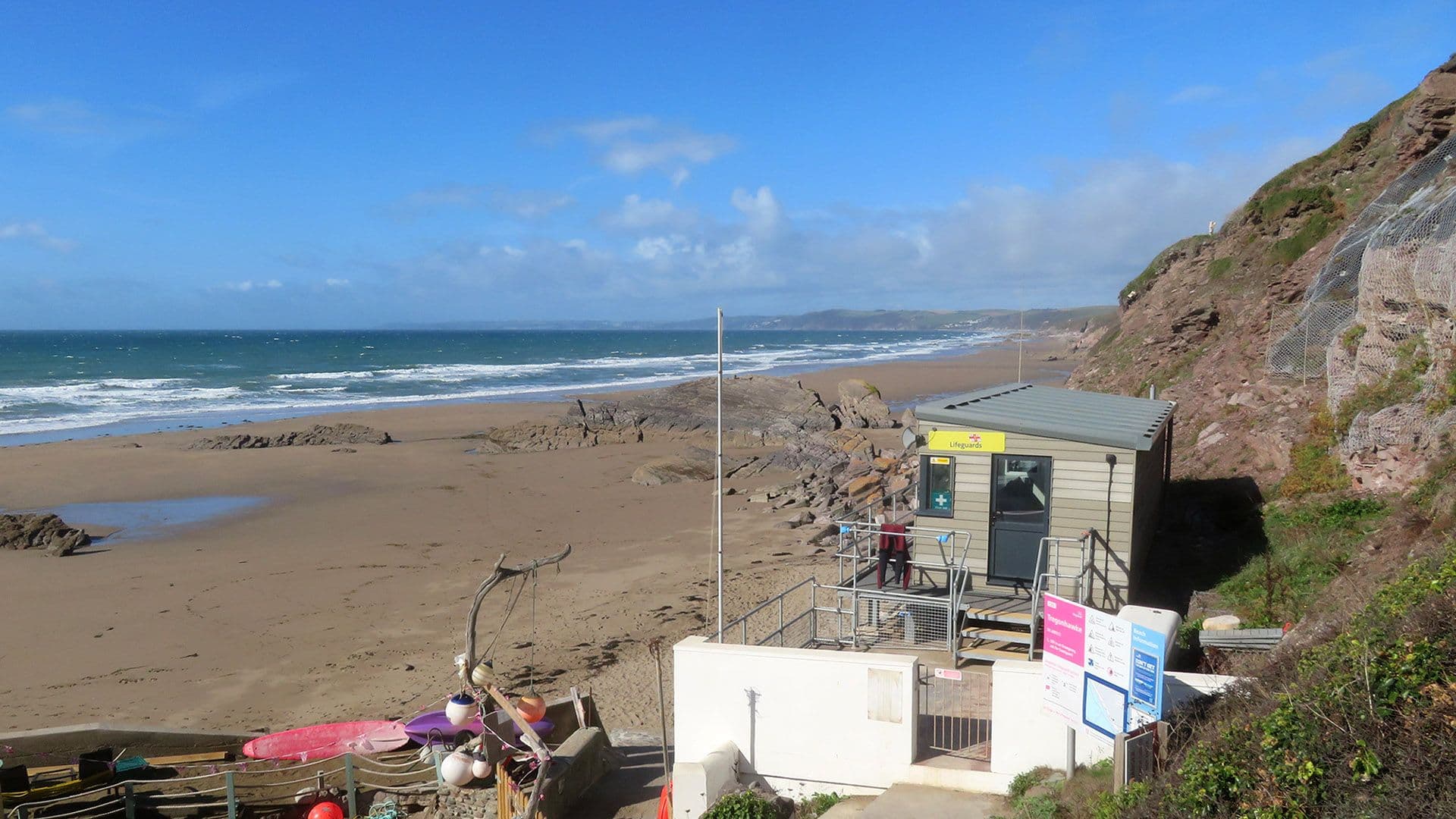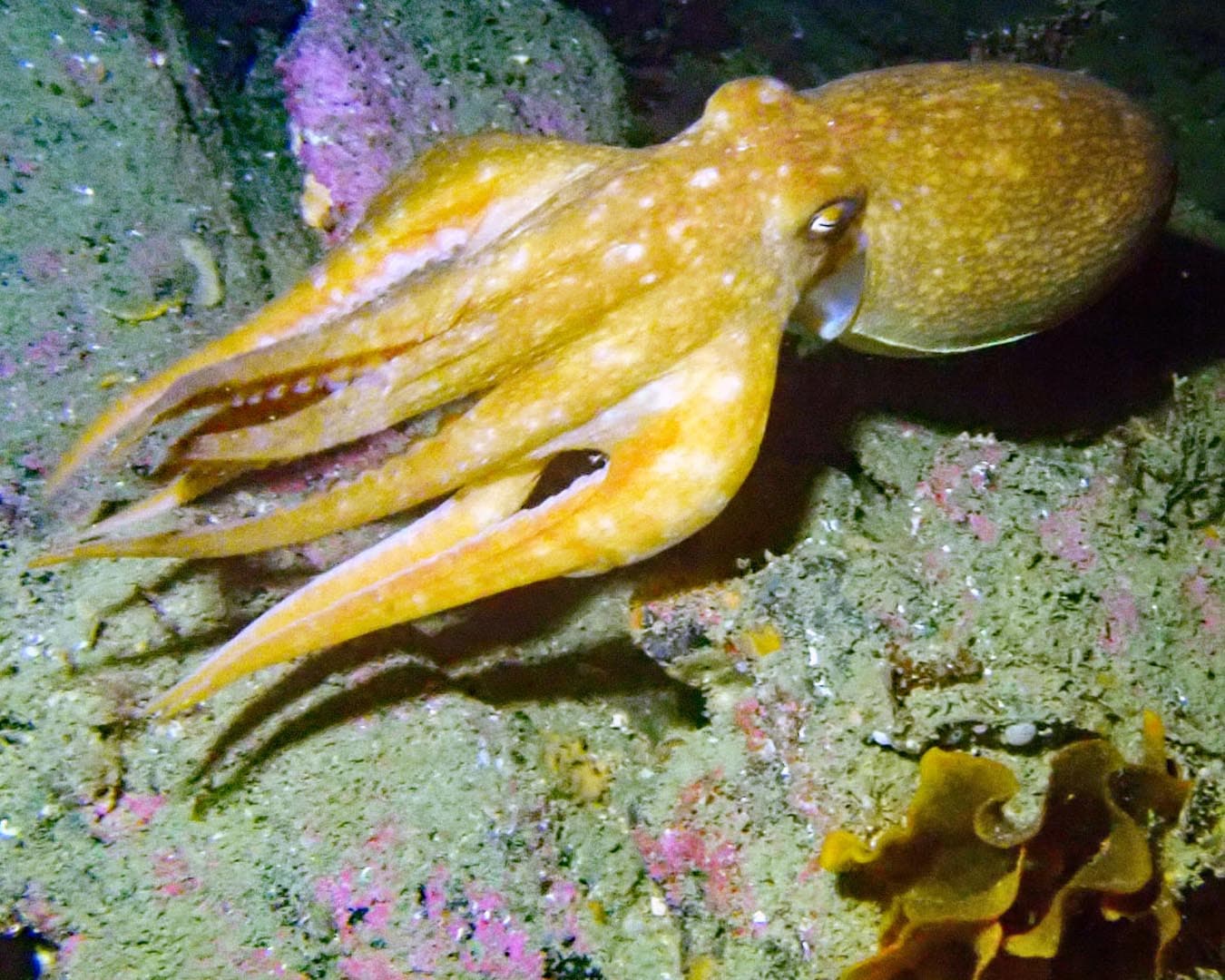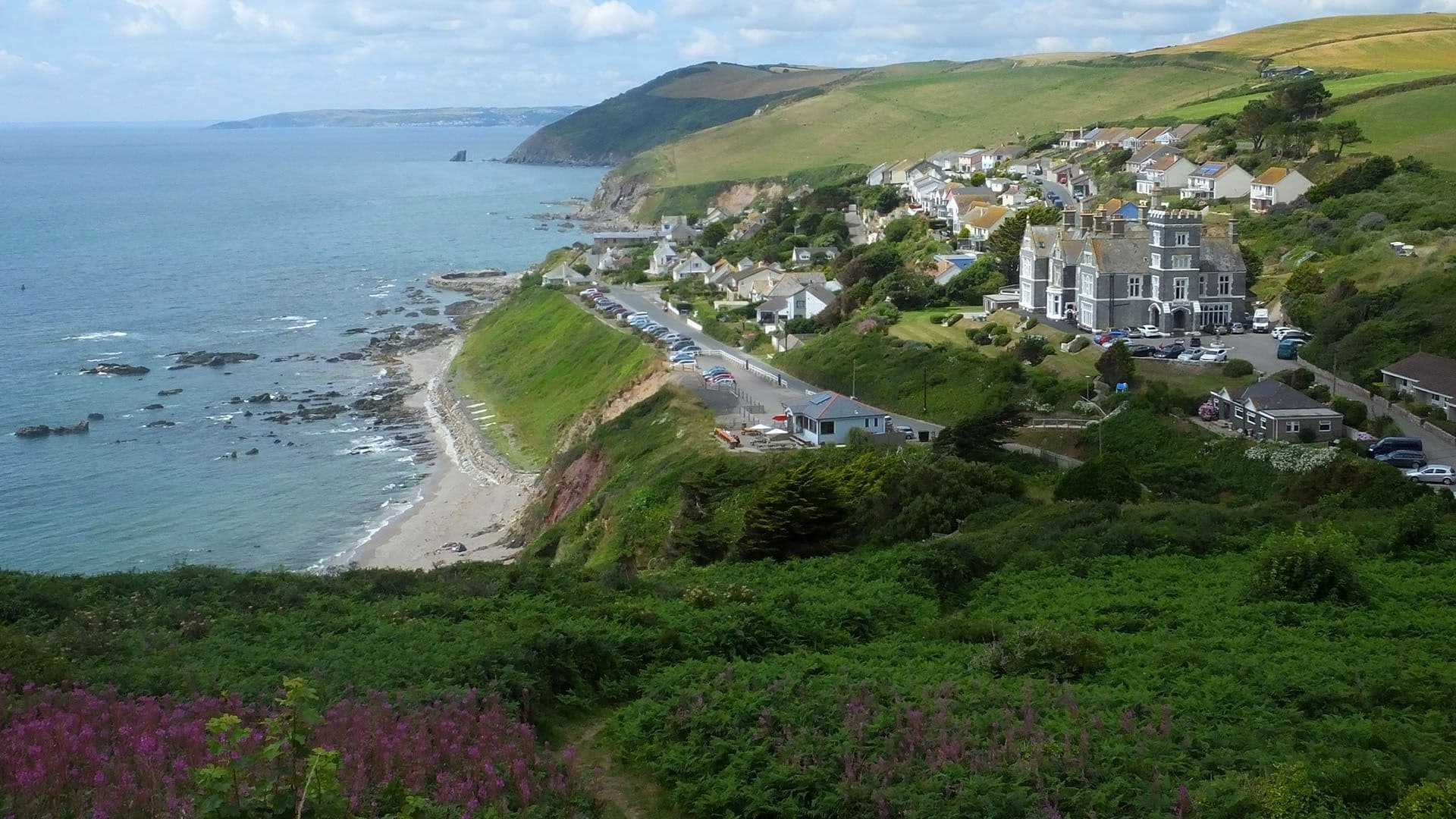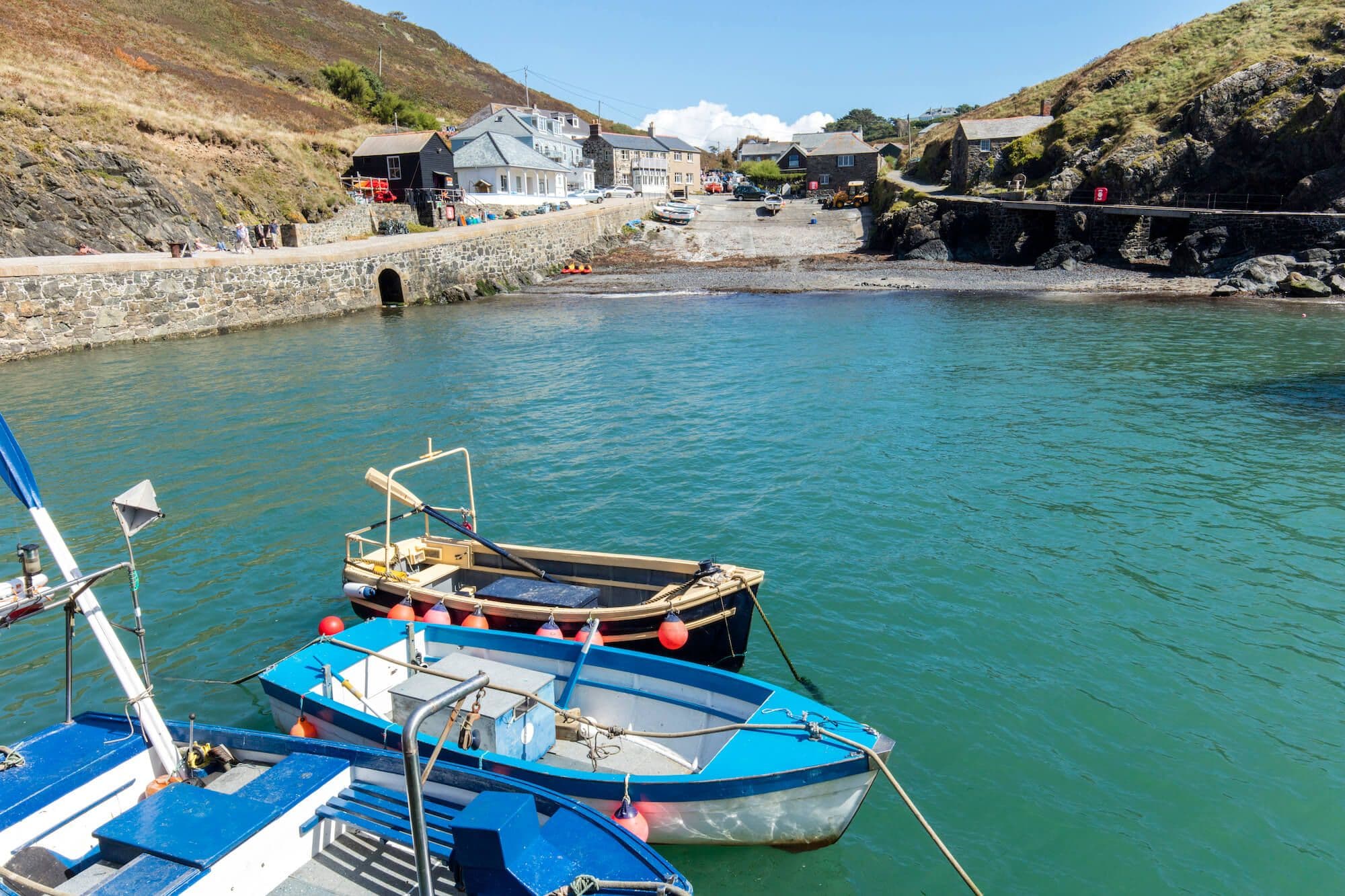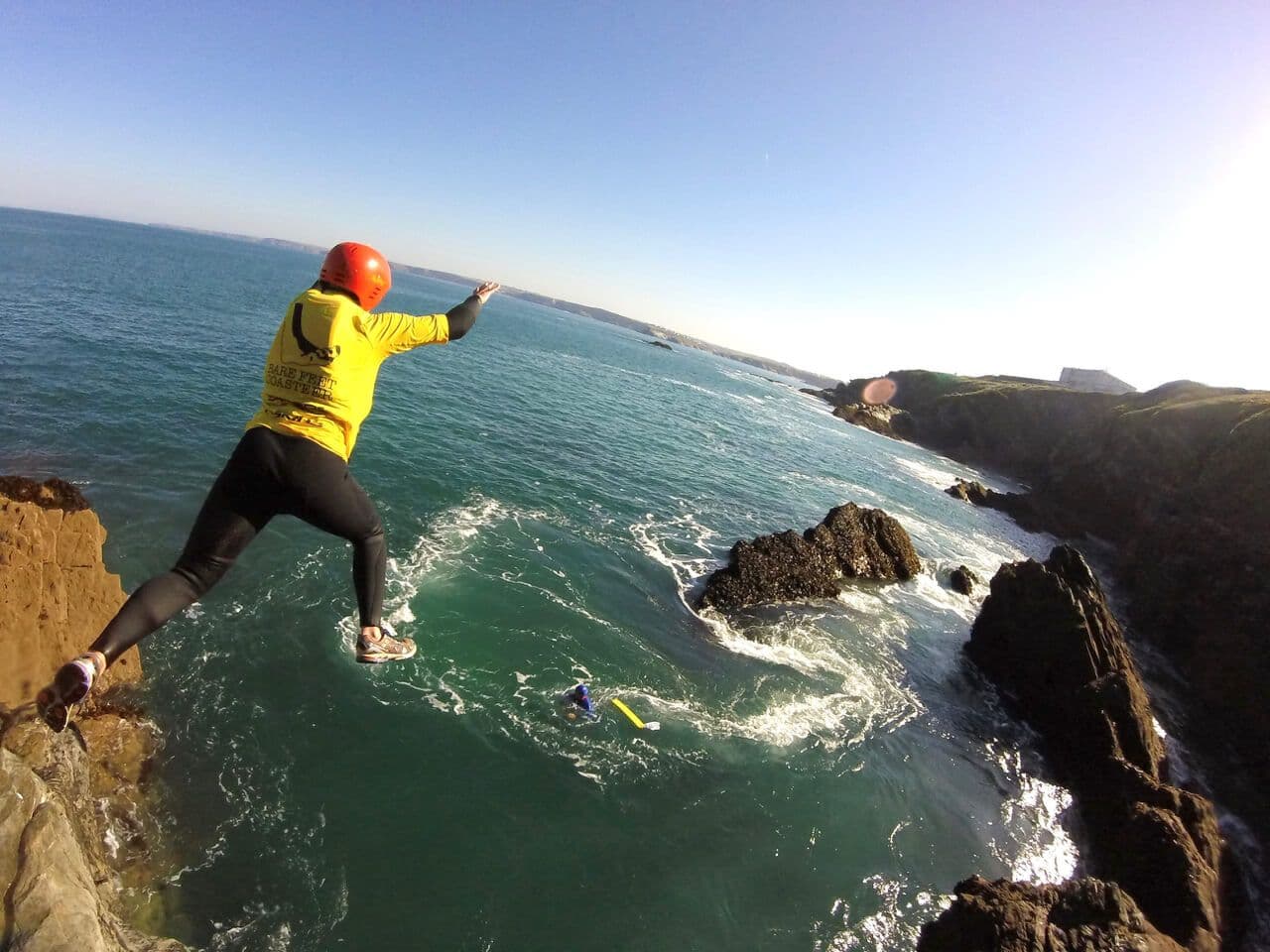Whitsand Bay
Cornwall's forgotten coastline
Whitsand Bay, on Cornwall’s south-eastern coast, offer over three miles of stunning sand, stretching from Rame Head west to the former fishing harbour at Portwrinkle and is considered one of Cornwall’s hidden gems.
A wildlife haven
Whitsand Bay is part of a Marine Conservation Zone that stretches down the coast towards Looe. It protects several habitats and species including eelgrass beds, a rich underwater habitat that provides shelter for cuttlefish, pipefish, seahorses, and juvenile fish. The bay is also home to pink sea fans, a very slow growing soft coral that is easily damaged by fishermen trawling the seabed.
Large parts of the cliffs along the bay are protected, partly because some very rare plants grow here, including the shore dock and early meadowgrass, but also they are geologically important. Up to 400 million years old, important marine fossils have been found here in the past. Look up and you will often see kestrels and buzzards, searching for prey. You may even spot a peregrine falcon. The cliffs are also home to the rare Dartford warbler.
Access down the steep cliff paths to the beach is not always easy, and it's a long walk back up! Please be aware that there are no bins on the beaches so to keep the area only take down what you need and bring everything back up, even dog poo! If you can, take an extra bag down with you and pick up any litter you see lying around. One piece of litter removed is one piece less going in the sea to do harm to marine life.
Reached by steep paths and steps that wind down between the verdant vegetation and holiday chalets, these beaches are never crowded. At low tide the long stretches of glistening sand provide great walking opportunities, whilst the constant swell keeps surfers happy riding some of the finest waves in south Cornwall.
Lifeguards are on station at various points along the beach between May and October, but please be careful if swimming as there are dangerous currents in the area at times.
A diver's paradise
Whitsand Bay is a popular dive site, home to HMS Scylla, an ex-naval frigate sunk in 2004 to form an artificial reef. Since then it’s been used for scientific studies of marine life, and is currently home to over 270 species. Nearby is the wreck of the James Eagan Layne, a US Liberty ship that was torpedoed in March 1945 while carrying US Army equipment, including jeeps. She managed to make her way into shallow waters and beached a mile off the coast in about 25 meters of water.
Both wrecks are popular with divers, though care should be taken entering either ship because of visibility and rusting metal. Further off-shore a British merchant ship called the Rosehill, which sunk with a cargo of coal in 1917, can also be explored, but is difficult to find.
Plan your trip
Everything you need to know to plan your perfect trip to Whitsand Bay
Coming by car, from the end of the M5 at Exeter follow the A38 to Plymouth and then across the Tamar Bridge into Cornwall. Continue on the A38 to the Trerulefoot Roundabout (about eight miles) then take the first left onto the A374. Follow signposts to Crafthole and then turn left, turning right just after Tregantle Fort.
You can also come across the Torpoint Ferry from central Plymouth.
The area is not well served by busses. The No 70 from Plymouth loops around the eastern end of the bay and the western end is served by the No 75. (Sept 2022)
The nearest train station is St Germans, but it might be easier to get off at Plymouth and catch the No 70 bus across the Torpoint Ferry.
Travel to Cornwall by car
It takes less than five hours to get from London or Birmingham to the heart of Cornwall by car.
Drive along the M4 motorway from London, or M6 from Manchester, and then the M5 to Exeter and finally either the A30, that is mostly dual carriageway, or the A38 passing Plymouth and Saltash into South East Cornwall.
Alternatively if you enter Cornwall from North Devon, there is the scenic A39 Atlantic Highway running through Bude, which you can join from Junction 27 on the M5.
Due to the high volume of traffic on Cornwall's roads during the summer months the main routes can become congested especially at weekends. Travelling overnight or outside peak rush hours is recommended to avoid long delays.
- To plan your journey use the AA Route Planner for a tailor made travel plan with timings and mileage
- For information on possible delays or roadwork's throughout the UK or in Cornwall visit Traffic Watch
- Travelling to Cornwall with a caravan? Check out this Caravan Towing guide
Travel to Cornwall by coach and bus
National Express operate a full service into Cornwall as far as Penzance, Megabuss also go to a few towns including Newquay and Falmouth.
Coach travel times from London or Birmingham to the city of Truro are around 7-8 hours
Many tour operators offer coach holidays to Cornwall, contact your local travel agent for details.
For information on public transport, including local bus timetables, once you are in Cornwall [click here].(https://www.firstbus.co.uk/cornwall/plan-journey/timetables).
If you are bringing a coach to Cornwall, did you know Cornwall Council now offers a weekly coach rover ticket. This is available for all car parks where coaches are permitted and costs £16.60 for 24 hours or £55.35 for 7 days and £38.75 for 4 days.
No, Whitsand Bay is in south-east Cornwall between Looe and Plymouth, whilst Whitesands Bay is the area running north from Sennen Cove, down near Land's End.
There is also a Whitesands Bay in Pembrokeshire, Wales.
According to MagicSeaweed.com
Whitsand Bay is good for surfing when a swell rolls in from the west. Good banks can be found all along the bay but are best below Freathy where the beach is watched over by lifeguards.
Access to the area below Tregantle Fort is regulated by the military (firing range) and closed when red flags flying.
Best from low to mid tide. September - February are best when the big swells roll into the Channel.
Parking and access can be tricky with only a few small car parks set back from the beach.
Beware of rip currents, especially for beginners.
Stay connected
Find us on socials and stay connected with the Cornwall you love.
We use cookies to personalise content and ads and to analyse our traffic. You consent to our cookies if you continue to use our website. (Privacy Policy)
